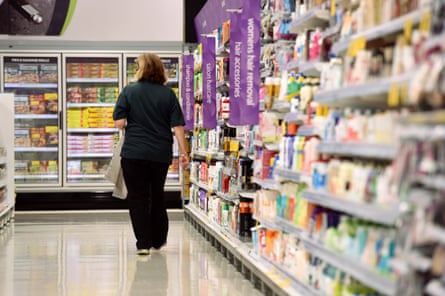Australian supermarkets breezed through the pandemic, increasing profits and shareholder returns even as living costs surged, all while avoiding the scrutiny faced by their overseas counterparts.
But a looming parliamentary inquiry, and a revitalised political interest in the discrepancy between prices paid to farmers and those charged by supermarkets, means the sector has been thrust into the spotlight.
The major supermarket chains regularly defend their pricing practices against critics but do their arguments stack up?
Transparency concerns
Overseas governments have used a combination of competition investigations, pricing inquiries and threats of price controls, sanctions and divestments to pressure supermarkets, uncovering flaws in their markets that are also relevant in Australia.
Canada’s competition watchdog found there were barriers stopping new entrants coming into the highly concentrated market, with established distribution networks and supplier arrangements making it difficult for new players.
A New Zealand study by the country’s commerce commission is particularly applicable, given the sector is dominated by a duopoly, as is the case in Australia where Woolworths and Coles control about two-thirds of the market.
Woolworths is also one of the dominant supermarkets in New Zealand.
The commerce commission found that competition was not working well for consumers given there was “muted” intensity in how the supermarkets competed.
It also found the profitability of the retailers was high, and prices elevated for shoppers when compared to international standards.
Gemma Rasmussen, the head of advocacy and research at Consumer NZ, said the complexity of supermarket pricing decisions meant shoppers often felt exploited.
“What we’re calling for is not lower prices, but fairer prices,” Rasmussen told Guardian Australia.
“Prices might be going up because of external factors, but you do want to know that the price is fair and that supermarkets are competing.
“There’s this creeping feeling that your bill is going up, but you can’t say exactly what you paid for something the week prior. Six months later, you realise you are paying $100 more for your shop.”
There were also questions raised in New Zealand over the confusion caused by promotions, and barriers to entry for new entrants such as a lack of land available for supermarket developments.
A Woolworths spokesperson said its New Zealand business participated in the study and had worked constructively with the government to implement recommendations.
Poorly executed and confusing supermarket promotions, as well as an abundance of shrinking products, have also raised the ire of many shoppers in Australia.
Promotional activities will feature in the upcoming Senate inquiry, according to the terms of reference, which is scheduled to start its public hearings early this year.
Profit expansion
While complicated supply chains make it difficult to work out the fair price for any single item, the overall profits generated by supermarkets do show whether they have benefited from the inflationary environment, marked by cost-of-living pressures.
Supermarket representatives have previously indicated that profit margins are not that high, and may have even dropped over the past decade.
A comparison of margins, the chief gauge of profitability, recorded by Woolworths’ Australian food business makes it clear that margins are significantly fatter than they used to be.
Analysis by Guardian Australia shows that Woolworths’ food business profit margins were at 5.4% in the last full year before the pandemic, before hitting 6% last financial year.
This represents a significant lift in a high-volume sector where a small rise leads to much bigger profits.
after newsletter promotion
The 6% margin is the highest Woolworths has recorded since it started separately reporting Australian food profit margins in 2016. Before that, the data is complicated by Woolworths including liquor and petrol sales in its calculations.
A Woolworths spokesperson said the supermarket was balancing the needs of customers, its team and suppliers in the context of economy-wide inflationary pressure.
“There are many factors that influence our [profit] margin which are not related to the prices customers pay, including product and business mix of sales, changes in stock-loss costs, material Covid costs in previous years and the efficiency of our operations,” the spokesperson said.
Margins at Coles generally increased during the pandemic but not as much as Woolworths’ profits.
A Coles spokesperson said: “We know our customers are impacted by the increase cost of mortgages, rent, insurance, fuel and household energy prices and we are doing all we can to provide the best possible value across our store in food and groceries.”
The margins helped Coles post a $1.1bn full-year profit at its most recent full-year results, while Woolworths lifted its annual profit to $1.6bn.
Both results were more than 4% higher than those recorded the year before, marking a profitable period for the supermarkets at the same time as their customers grappled with fast-rising grocery prices.
Meat matters
In Australia, farmers have questioned why declining wholesale prices for produce, namely meat, have not prompted similar price drops for shoppers, with the issue now emerging as a major political point.
The Queensland premier, Steven Miles, as well as farming groups AgForce, National Farmers’ Federation and NSW Farmers, have expressed concerns over the discrepancy.
Several agricultural groups have also called for a competition regulator-led investigation that could delve into supermarket pricing practices, as they believe current measures ordered by the government are not powerful enough.
Wholesale sheep, lamb and cattle meat prices fell by up to 70% last year, before a recent and partial price recovery in some cuts; although shoppers did not enjoy similar price reductions.
Craig Emerson, the former Labor trade and consumer affairs minister, will lead a review of the grocery conduct code which governs how Coles, Woolworths, Aldi and Metcash, which operates IGA, deal with suppliers and customers.

The government has also flagged shifting from industry-led codes of conduct to mandating requirements.
“We want to make sure that every single reduction in costs to the big supermarkets gets passed on to the customers,” the prime minister, Anthony Albanese, said on Thursday.
“They have a responsibility to do so. And we will act.”
The price consumers pay for meat can be complicated by the existence of sales contracts that don’t take into account short-term price fluctuations, and other costs such as transport, which are all issues that will be investigated by the Emerson-led inquiry.
The Woolworths spokesperson said there were several reasons for the discrepancy between wholesale and retail prices.
“We honour the price commitments we make to our long-term farmers and suppliers as it gives them the ability to plan, and we don’t jump to take advantage of lower spot prices,” the Woolworths spokesperson said.
“While we pay our farmers for every kilogram of a carcass, we only sell around half of it in our stores, removing things like bones, hooves and fat.
“That’s part of the reason there has always been a clear difference between the livestock price and the retail price.”
The Coles spokesperson said the supermarket was committed to helping Australians facing cost-of-living pressures by providing high quality produce at affordable prices.
“We are focused on keeping the price of food and groceries low for our customers, while paying our hard-working farmers and producers fairly,” the spokesperson said.











